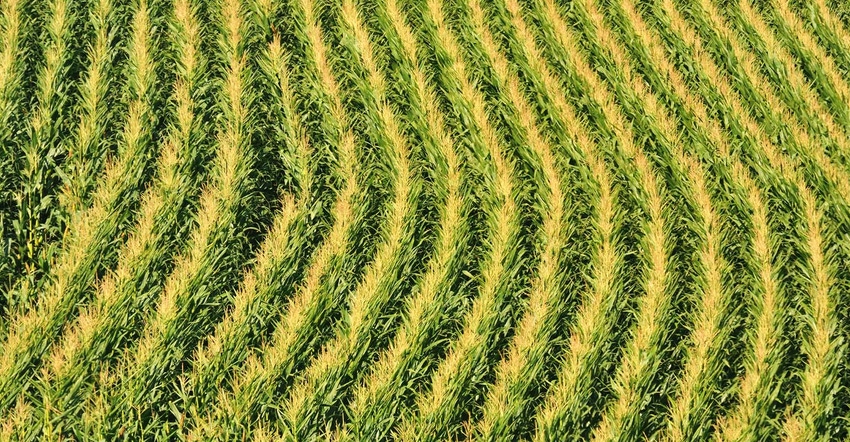
This year’s U.S. corn crop quality has decreased again, according to the latest USDA Crop Progress report, released Monday afternoon and covering the week ending Aug. 19. Soybean quality ratings also dipped last week, according to the agency.
USDA downgraded corn crop quality from 70% rated good-to-excellent the prior week down to 68%, moving it even lower than analysts’ expectations of 69%. That marks several consecutive weeks the agency has lowered its corn quality assessment. Another 20% of the crop is rated fair (unchanged from a week ago), with the remaining 12% rated poor or very poor (up two points from a week ago).
Texas (29%), North Carolina (35%) and Missouri (28%) continue to represent the lowest statewide ratings of good-to-excellent corn. Other key production states continue to do very well, including Nebraska (84%), Ohio (77%), Illinois (76%) and Minnesota (74%).
“Today’s drop in corn ratings followed the pattern of below average precipitation seen last week in the northwestern part of the growing region, and cut yield potential significantly,” says Farm Futures senior grain market analyst Bryce Knorr. “The average of our two models fell 1.6 bushels per acre to an average of 176.5 bpa. The model based on the nationwide rating is down to 175.7 bpa while the estimate using state-by-state ratings is at 177.3 bpa.”
Overall, yield potential has dropped nearly four bushels per acre since USDA did its survey for its August 10 production estimate, Knorr adds.
Physiologically, corn is still tracking about a week ahead of normal, with 85% of the crop reaching dough stage, versus 74% a year ago and a five-year average of 72%. Another 44% of the crop has reached the dented stage, versus 27% a year ago and a five-year average of 26%.
USDA also lowered its assessment of the soybean crop, moving it from 66% to 65% in good-to-excellent condition. Analysts expected the agency to leave crop conditions unchanged this week. Another 24% of the crop is in fair condition (unchanged from a week ago), with the remaining 11% in poor or very poor condition (up one point from a week ago).
State-by-state, the U.S. soybean crop is exhibiting a wide range of quality variance, from Nebraska’s stellar crop (81% rated good-to-excellent) on down to struggling Missouri (34% rated good-to-excellent).
“Ratings eased along a somewhat similar pattern for soybeans, though conditions improved in Kansas and Missouri, drought-hit states that benefited from good rains last week,” Knorr says. “That helped keep our estimate based on state condition reports unchanged at 49.7 bpa, even though the nationwide model declined three-tenths of a bushel to 50.7 bpa. The average of the two models is 50.2, down almost a full bushel per acre from when USDA put together its August 10 estimate.”
Physiologically, this year’s soybean crop is maturing slightly faster than average, with 91% of the crop now setting pods versus last year’s pace of 86% and a five-year average of 83%.
This year’s spring wheat quality also moved lower, with USDA assessing 64% of the crop in good-to-excellent condition, down one point from the prior week. Another 21% of the crop is rated fair (up one point from a week ago), with the remaining 5% rated poor or very poor (unchanged from a week ago).
“Spring wheat ratings continue to be somewhat erratic, dropping a half bushel per acre as more harvest reports come in following a relative dry week on the Northern Plains,” Knorr says. “Our average yield based on the ratings is at 50.2 bpa, though the state-by-state estimate is moving closer to USDA.”
Spring wheat harvest reached 60% completion last week – a big jump from the prior week’s total of 35%. That puts the pace of 2018’s harvest slightly ahead of last year (55%) and moderately ahead of the five-year average of 44%.
The U.S. winter wheat harvest inched forward from 94% complete the prior week to 97%. That pace is in line with 2017’s progress and the five-year average, both at 98%.
Farther south, 17% of the U.S. cotton crop has open bolls, slightly ahead of 2017’s pace and the five-year average of 12%. This year’s embattled crop saw some quality improvement last week, moving two points higher to 42% rated good-to-excellent, but it’s still moderately behind 2017’s crop, which was rated 63% good-to-excellent at this point in the season last year.
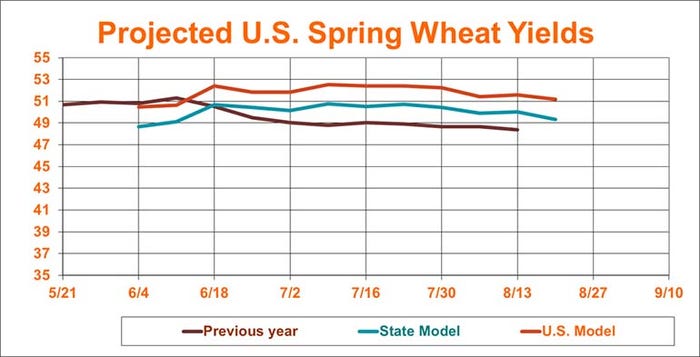
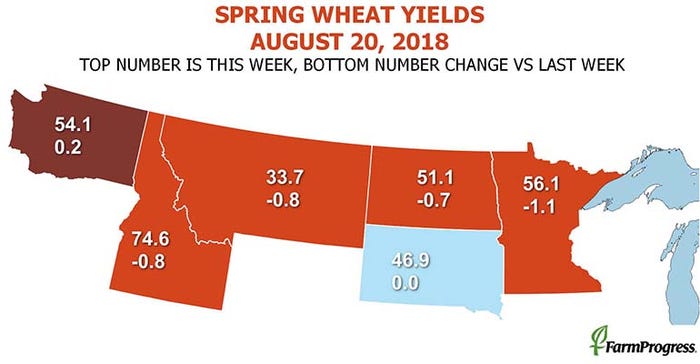
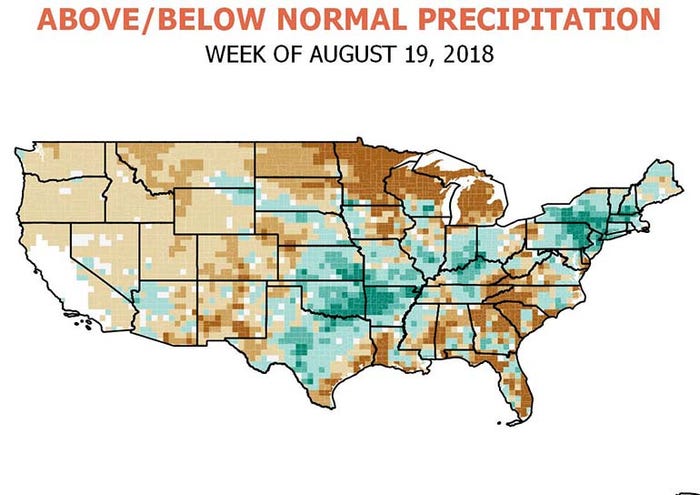
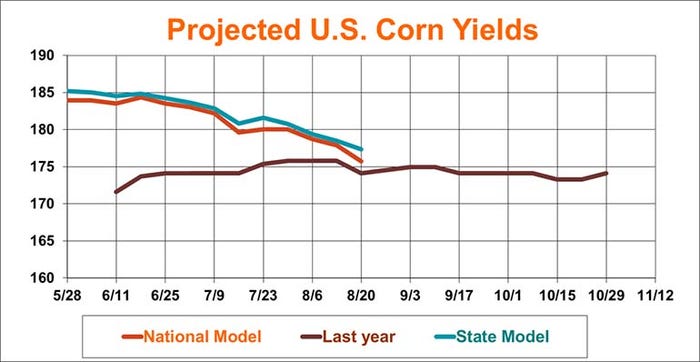
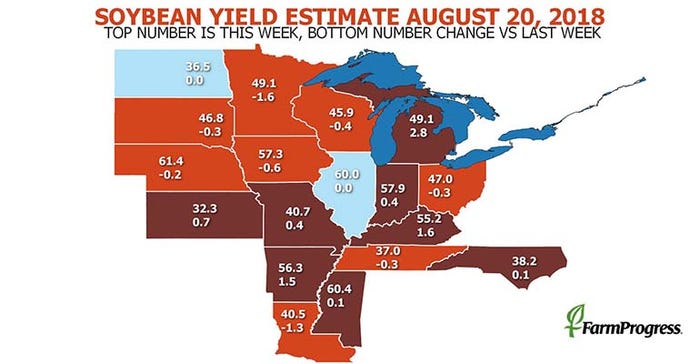
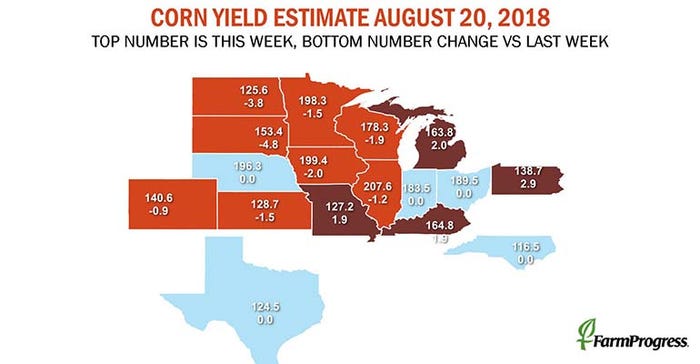
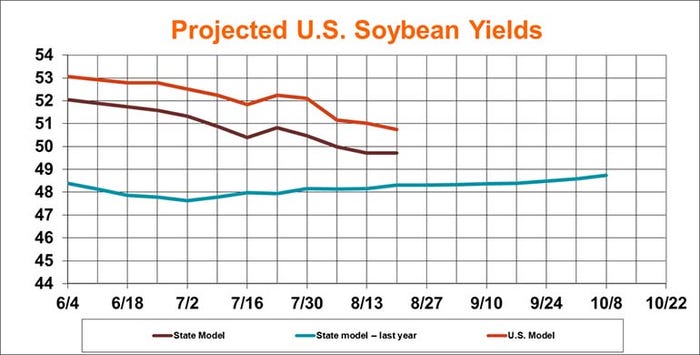
About the Author(s)
You May Also Like






